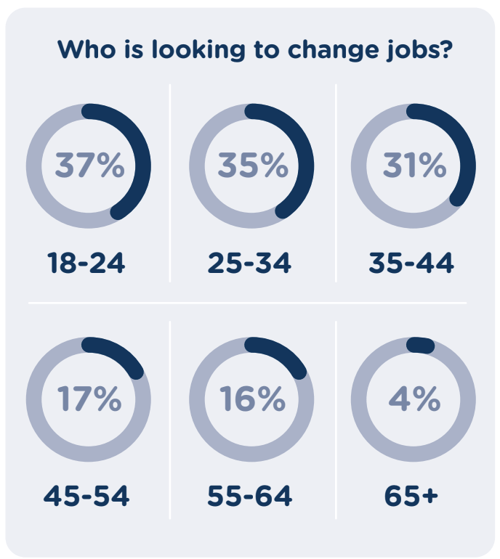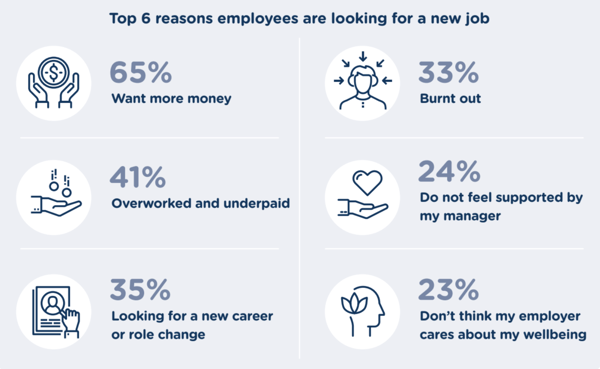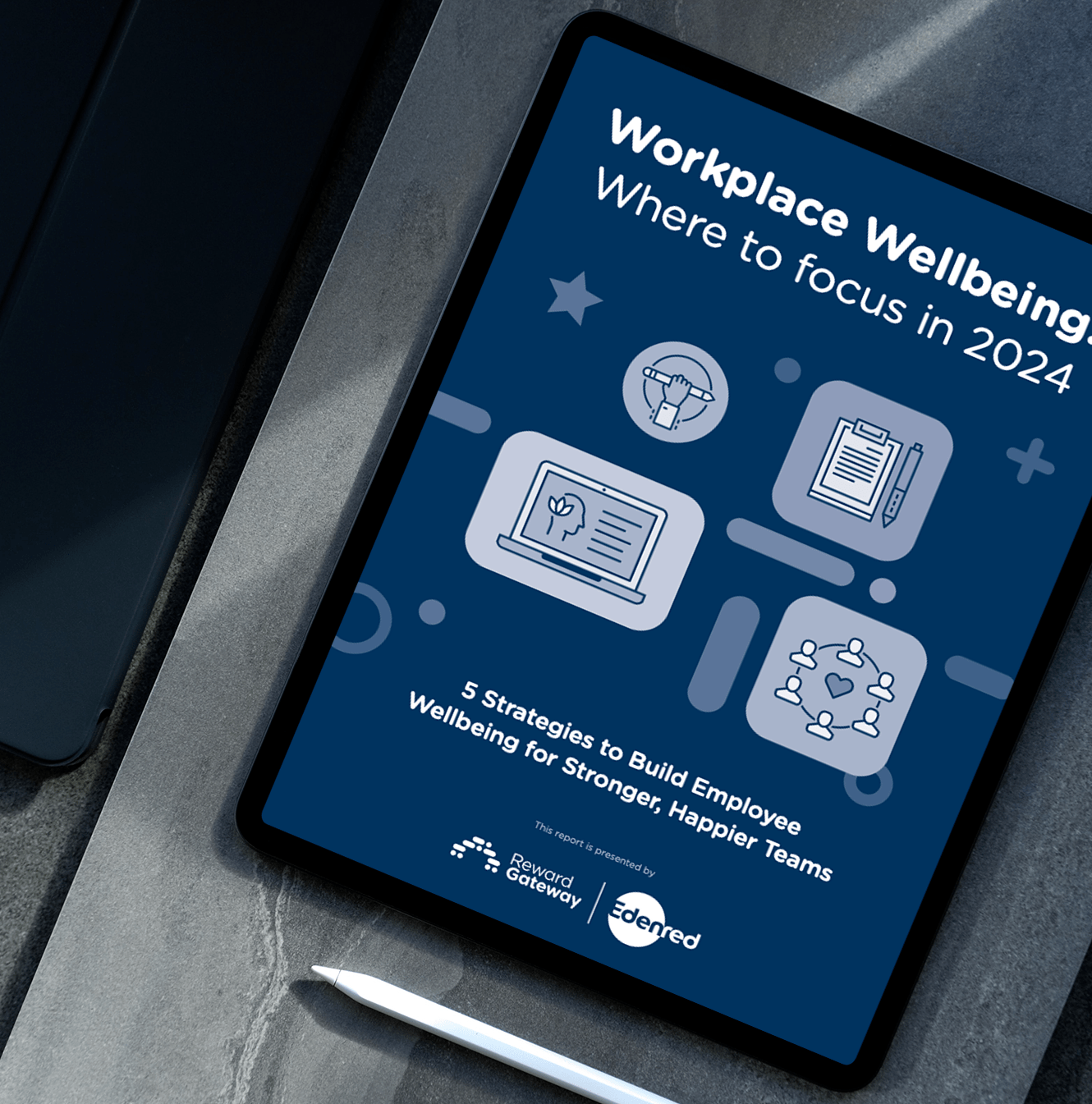In our 2024 Workplace Wellbeing: Where to focus in 2024 report, we learned that, on average, 23% of any workforce is looking for a new employer now or within the next year.
Think about that: Almost a quarter of your workforce has their eyes and minds turned elsewhere. Why? For many, the reasons are tied to employee wellbeing.
Wellbeing matters to your business
 Let’s talk retention and attrition.
Let’s talk retention and attrition.
No one wants to incur the cost and effort of hiring new employees to replace the ones you’ve lost. Add to that the skills and corporate knowledge you lose – often to competitors – when an employee walks. It’s most definitely in your best interest to delve into who’s leaving your organization and, vitally, why.
Research shows the urge to move is strongest in younger employees and drops off as age increases. And although we are seeing more people than ever are comfortable having wellbeing conversations at work – not just physical, but mental and financial as well – our youngest employees are the least comfortable of any age group in these discussions. So if our 18- to 24-year-old employees are both uncomfortable with wellbeing talks and the most likely to leave, how do you know if they need support so you can engage and retain them?
Are managers comfortable starting the conversation? If not, they will need support, too.
Supporting wellbeing as a company
 The stats starkly highlight the failing state of U.S. wellbeing and the need for resources devoted to it. But all is not dark: Senior leaders understand the need to support employees in this way. A study of 125 CEOs identified that 90% say they are taking action to support mental health and employee wellbeing, but intent doesn’t necessarily lead to improvement. At the same time, we still see only four in 10 people rating their companies’ wellbeing support as good or excellent. As the importance of these benefits soars, visionary companies will seize this opportunity to stand out in the market. How?
The stats starkly highlight the failing state of U.S. wellbeing and the need for resources devoted to it. But all is not dark: Senior leaders understand the need to support employees in this way. A study of 125 CEOs identified that 90% say they are taking action to support mental health and employee wellbeing, but intent doesn’t necessarily lead to improvement. At the same time, we still see only four in 10 people rating their companies’ wellbeing support as good or excellent. As the importance of these benefits soars, visionary companies will seize this opportunity to stand out in the market. How?
When asked for the top three ways employers can best improve employee wellbeing, employees said:
- Provide a pay raise or bonus (56%).
- Encourage a healthy work-life balance (41%).
- Recognize and reward employees for their contribution (34%).
It’s worth mentioning that employees’ fifth suggestion was that employers set realistic expectations for roles and responsibilities, at 26%. This is so closely tied to encouraging a healthy work-life balance that, viewed as one response, this advice would jump to 67% – and number-one recommendation for bosses.

Pay is always going to be a big deal. But in another question, our survey uncovered factors that are more important than a 10% pay raise, like an employer (44%) or a manager (43%) who cares about their wellbeing.
When we asked U.S. employees what they most wanted their employer to focus on in the next year, the top three were employee benefits, reward and recognition and wellbeing – the same results as 2022. Interestingly, wellbeing jumps from third to second place for fully remote employees and those in healthcare.
What this tells us
People are invested in their personal wellbeing, both in and out of the workplace. Every aspect of a person’s wellbeing affects them at work – mental, physical, financial and social – so it’s important that employers provide dynamic supports to their people. 79% of managers feel responsible for their team’s wellbeing, and employees cite managers as having equal impact on their mental wellbeing as spouses or partners, so this relationship is vital for leadership to foster and support. Employees who don’t receive this support are liable to leave in favor of an organization that offers it.
We’ve identified five primary areas to focus on in 2024 to improve your organization’s wellbeing strategy:
- Don’t overlook the power of pay (and benefits)
- Go all-in for work-life integration
- Use recognition as a strategy
- Get excited about AI
- Support managers to help employees
Learn more about each of these strategies in detail in our Workplace Wellbeing: Where to focus in 2024 report, powered by a survey of 1,000 (18+) U.S. workers at organizations of 100 people or more.
See how Reward Gateway can help your organization improve its workplace wellbeing program by scheduling a call with one of our friendly employee engagement experts.

%20(1).jpeg) Alexandra Powell
Alexandra Powell




